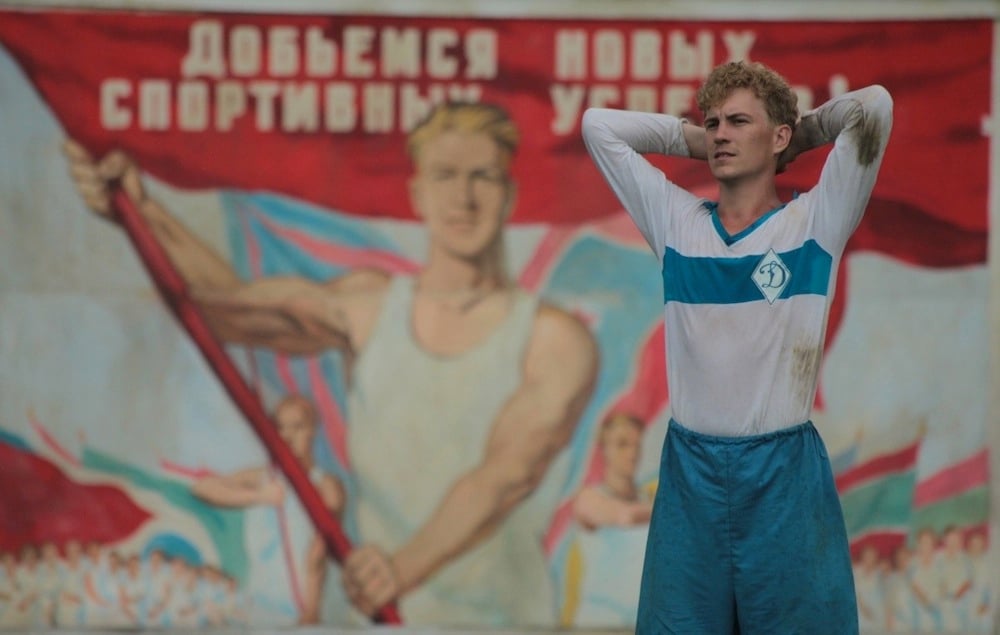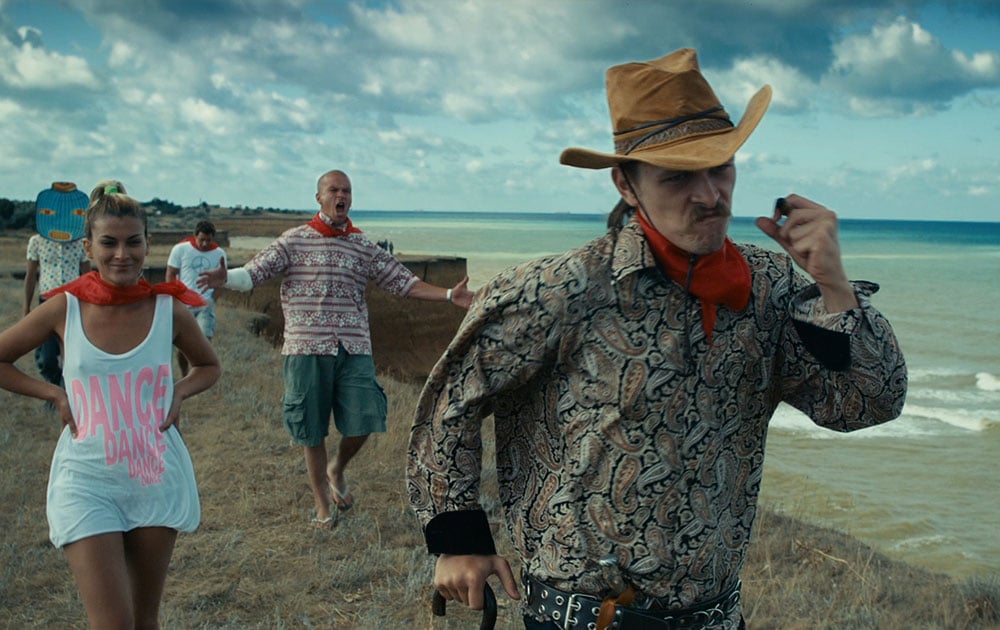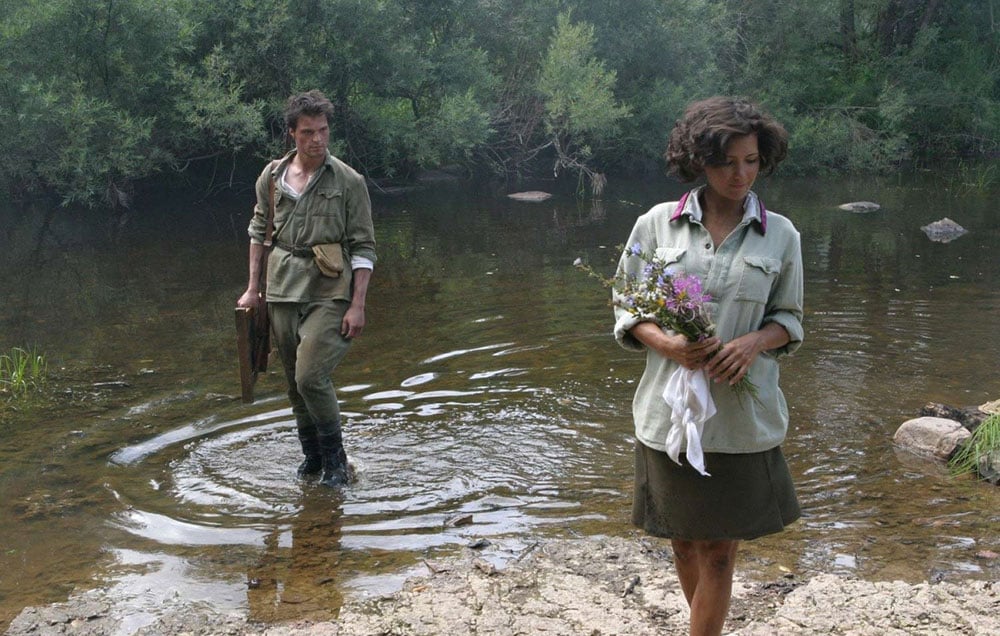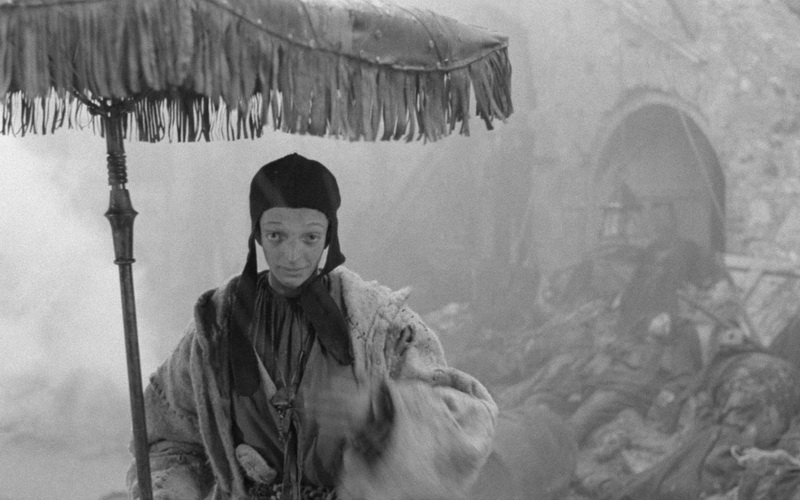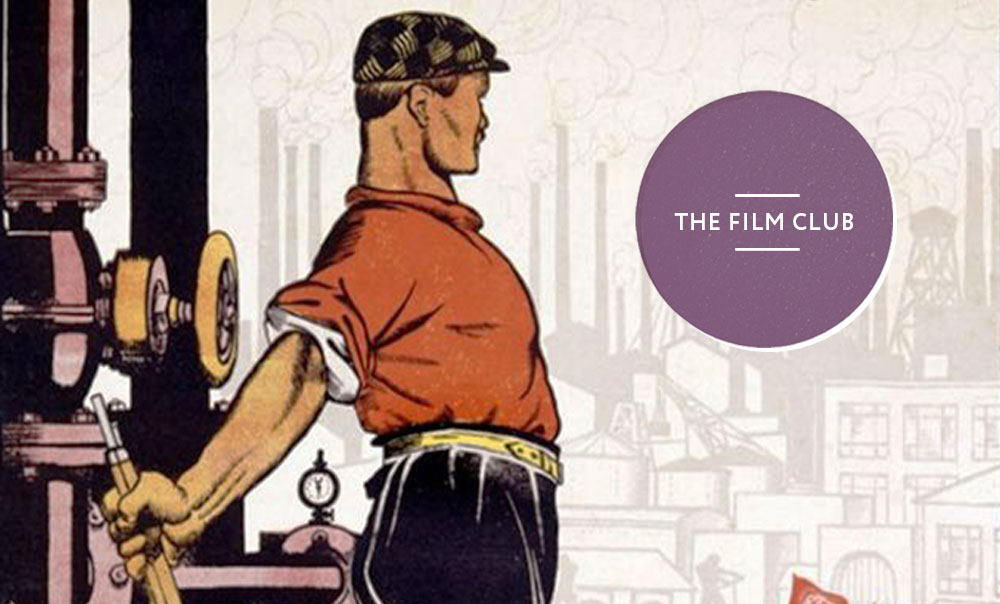Dress to suppress: East European geopolitics and the costume drama
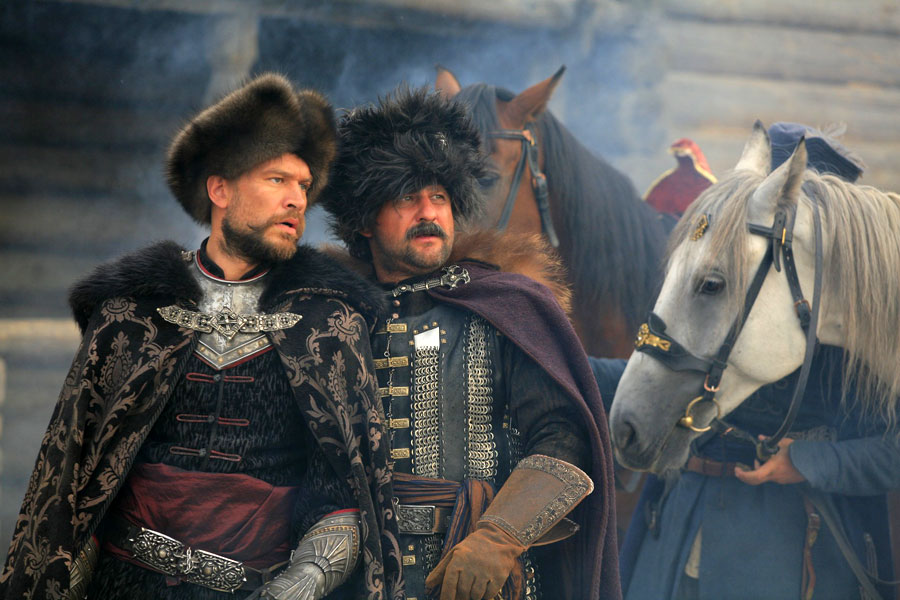
Hollywood's costume dramas can be dull, but they're largely harmless. In the endlessly tense interactions of Russia, Poland and Ukraine, however, identikit nationalist historical epics are powerful geopolitical tools. Isn't it time, asks Agata Pyzik, for a bit of variety?
“Sweden, Poland, Lithuania: does that remind you of anything?” asked Dmitry Kiselyov, the controversial Russian news presenter. He was referring to three of the most prominent countries to support a legal agreement between Ukraine and the EU; when President Viktor Yanukovych abandoned this pact in December, he provoked the mass anti-government protests in Kiev that continue to this day. So what does Kiselyov, who was recently made head of state news agency Russia Today, think of when he hears these three European nations listed together? “It’s the same alliance that Peter the Great defeated at Poltava in 1709. Amusing as it may sound, it now looks like they want revenge for Poltava.”
For Kiselyov, and many other commentators in Eastern Europe, history is constantly repeating itself: nothing ever changes and the characters merely take on new names. With his victory at Poltava, Peter the Great secured Russian hegemony in Ukraine; his analogue now, in Kiselyov’s mind, is, of course, Vladimir Putin. But who is Yanukovych? The pro-European protesters on Maidan Nezalezhnosti — the “Independence Square” now often referred to as “Euromaidan” — might liken him Ukrainian Cossack leader Bohdan Khmelnytsky, who was faced with a similar choice between Russia and the west (in the shape of the Polish-Lithuanian Commonwealth) and ultimately chose the former, leading Ukraine into Russian overlordship and determining their geopolitical fate for the next 400 years.
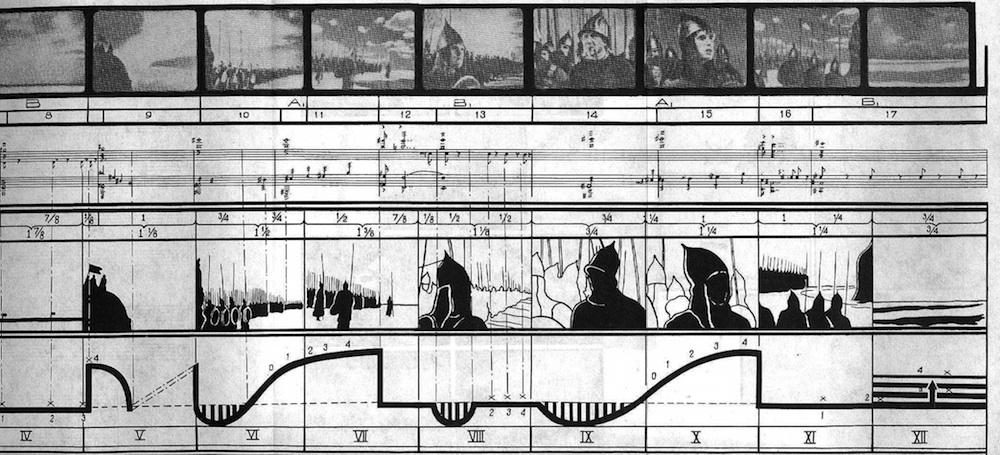
Sergei Eisenstein matches sound and image for Alexander Nevsky (1938)
Since the end of Soviet domination in 1989, and the resulting rise of nationalist historiographies in Eastern Europe, such comparisons have become increasingly popular, both officially and unofficially. These parallels are usually invoked in the name of “national remembrance”, in order to salve “unhealed wounds”. They have become an essential tool in the construction of a new post-communist, anti-communist national identity in Eastern Europe.
“Poland indulges in anti-Russian sentiments, while Russia bemoans the Polish invasions of the 17th century”
Newly established institutes for the investigations of communist crimes have done much to create this new history, sometimes under the pernicious influence of right-wing governments. But more far-reaching than these legal retellings of history is the popular recasting of the past in cinema. In the last 25 years, Eastern Europe has given us many films that have tried to resurrect the pre-communist period, while paradoxically using the most communist style possible — a sort of grand, emotive nouveau socialist realism. In these historical epics, the events of the past are isolated from their historical context and made to represent current national antipathies: Poland indulges in anti-Russian sentiments, while Russia bemoans the Polish invasions of the 17th century. Smaller nations get to vent at both Poland and Russia: Belarus had the recent series Talash, set in 1919, in which Poles and Bolsheviks take turns to ravage the countryside; Ukrainian films either swing towards Russia, for instance in The Match (2012) or against it, as in Prayer for Hetman Mazepa (2002).
Old-school Hollywood takes on Eisenstein: the American trailer for Ivan the Terrible
Political motivations run through historical epics from all countries: Cecil B DeMille analysed his own decidedly anti-communist Ten Commandments by saying, “Are men the property of the state, or are they free souls under God. The same battle continues throughout the world today.” The East European iteration of this trend, however, originated with pre-war Soviet pictures like Sergei Eisenstein’s masterful Alexander Nevsky (1938) and Ivan the Terrible (1942-46), which — albeit ambiguously and artfully — suggested that Stalin’s bloodletting and antagonisms with Germany had glorious antecedents in Russian history. Eisenstein’s Stalin-Alexander of 1938 is an angelic figure and devoted servant of the Orthodox Church, who takes on the Teutons, who are thinly disguised medieval Nazis with pseudo-swastikas and a robotic, inhuman appearance. (When the Ribbentrop-Molotov pact was signed a year later, the film was pulled from general release.)
“Once more the beautiful, blond-haired Poles must fight the eternal Bolsheviks, barbarians with devilish, blackened faces”
After the war, this template was introduced to the new satellite states of Eastern Europe. Poland’s first real historic epic may have only been shot after the decline of the socialist realist doctrine, but it chose a familiar subject matter. Knights of the Teutonic Order (1960), by committed communist Aleksander Ford, is an adaptation of a novel by Polish Nobel Prize laureate Henryk Sienkiewicz, featuring unrivalled combat scenes depicting the decisive battle of Grunwald against the Teutonic Knights in 1410. In line with the “national path” to communism promoted by the Polish government, Ford used the simultaneously effete, robotic and ruthless Germans to indulge Polish nationalist feelings without upsetting the Russians. This approach meant that nationalist epics could prosper across Eastern Europe: Jerzy Hoffman’s adaptations of the first two novels of Sienkiewicz’s Trilogy, adapted as Colonel Wołodyjowski (1969) and The Deluge (1974), and were critical and popular hits in the Soviet Union.
1920 Battle of Warsaw
But this changed in 1989. By the time Hoffman came to make the last part of Trilogy, By Fire and Sword, in the free Poland of 1999, anti-Russian sentiments were evident in his depiction of the aftermath of Khmelnytsky’s revolt against the Poles. These sentiments intensified after the 2010 Smolensk plane crash, in which dozens of Polish ministers died on Russian soil. In 2011, probably the worst Polish film since 1989 (a hotly contested title): Hoffman again with Battle of Warsaw 1920 was released, showing the Polish-Bolshevik war of 1920. Once more the beautiful, blond-haired Poles must fight the eternal Bolsheviks, barbarians with devilish, blackened faces — but this time in glorious 3D. (It makes an interesting compare and contrast with Soviet director’s Efim Dzigan’s 1941 Stalin-praising depiction of the same conflict in First Cavalry.)
“All these films tell the same emotive story — a compelling central character’s sacrifice for his homeland”
For their part, Russian filmmakers have been willing to look back further in history to find evidence of Polish skullduggery. In 2007, the star of With Fire and Sword, Polish heartthrob Michał Żebrowski, crossed sides in order to play a Polish traitor in controversial Russian film 1612, which was produced by noted Kremlin loyalist Nikita Mikhalkov. 1612 concerns Polish interventions in Russia in the early 17th-century “Time of Troubles”, when Polish noblemen tried, and failed, to seize power by imposing two successive “false Dmitrys”, two pretenders to the throne purporting to be the sons of Tsar Feodor Ivanovich. The film was released to coincide with National Unity Day, a celebration on 4 November instituted by Putin in a somewhat flawed attempt to replace the celebration of the revolution with something less polarising; he settled on the expulsion of the Poles. The film was clearly designed to strengthen this message and the ideological power of the current regime.
The trailer for 1612
These brutal historical super-productions are not, however, an effective expression of the strength of the official ideology; on the contrary, they have to be so extreme because they express its weakness. Such films include the new retelling of Alexander Nevsky in Igor Kalenov’s Alexander: Battle on the Neva (2008) and the artistically unaccomplished continuations of Nikita Mikhalkov’s masterful Burnt by the Sun: Exodus & Citadel (2010). Admiral (Andrei Kravchuk, 2008), about counterrevolutionary Civil War general Alexander Kolchak, is aimed both against the Bolsheviks and the Germans (in this way it recalls the 1934 Soviet classic Chapayev, just replacing a Red commander with a White one). All these films tell the same emotive story — a compelling central character’s sacrifice for his homeland.
“Cinema is still a historical battlefield, a chance for ‘war minus the shooting’”
A similar emphasis on strong leaders is evident in Ukrainian films too, whether pro- or anti-Russian. The scandalous Prayer for Hetman Mazepa (Yuri Ilyenko, 2002) depicts Ivan Mazepa, another controversial 17th-century figure, freeing his people from barbarous and perverted Russian rule, like a sort of Ukrainian Braveheart. The film was lavished with money by then premier Viktor Yushchenko, who had helped combat Russian interference in the Orange Revolution. Despite its $2.5m budget (the most expensive made in independent Ukraine), the film failed completely and never went on general release. Some considered the film to be anti-Russian, others the opposite; Ilyenko is now a member of far-right Ukrainian nationalist party Svoboda.
Taras Bulba trailer
The same logic applied when the Poles are the Ukrainians’ enemy: the 2009 adaptation of Nikolai Gogol’s novel Taras Bulba, directed by Ukrainian Vladimir Bortko, but financed by the Russian government, depicted the Poles as tyrannical abusers who burn Ukrainian hero Bulba alive. As the flames rise, Bulba promises that a great tsar will come, who will be stronger than everybody else. Over and above nationalist ideology, these films support the cult of the tough, unquestioned leader.
As the political tensions are not likely to calm down, several films about the Second World War are in production, such as the glamorous Miasto44 (City44) by Jan Komasa about the Warsaw Uprising of 1944, when Germans demolished the Polish capital and “the Russians didn’t help” — an event that has been an obsession in Poland for the last few years.
Cinema is still a historical battlefield, and along with sport, it is the greatest national spectacle, a chance for “war minus the shooting”. Yet the emotions it catalyses remain raw and help perpetuate national myths. Is it too much to ask for films that, instead of this constant resentful blaming of others, makes us look inwards to dissect our national myths?
